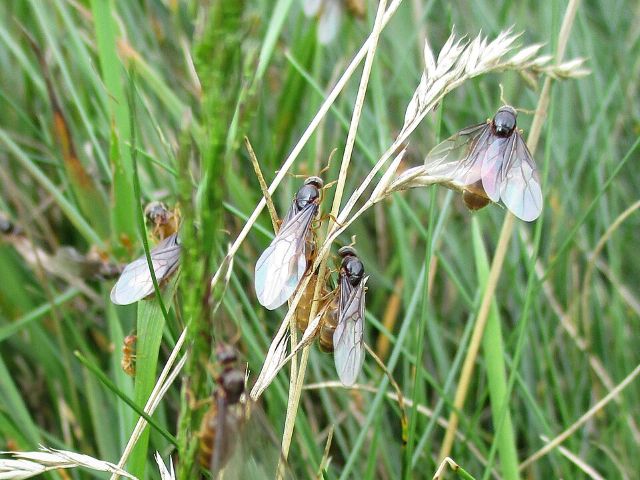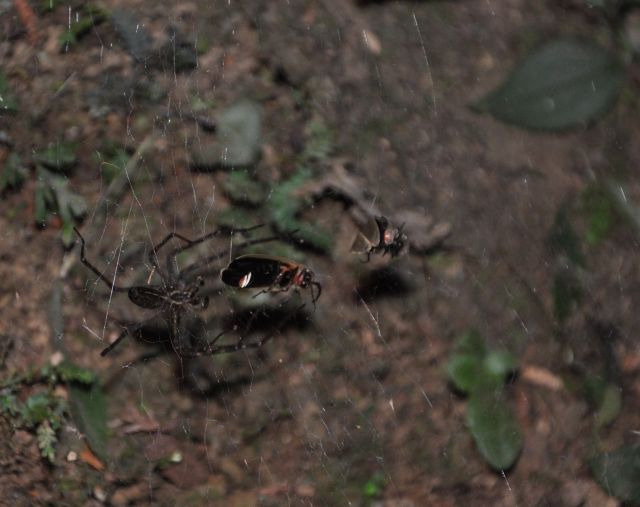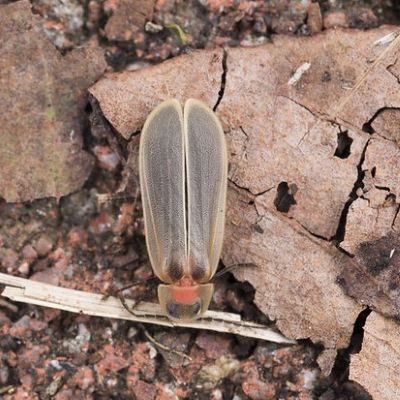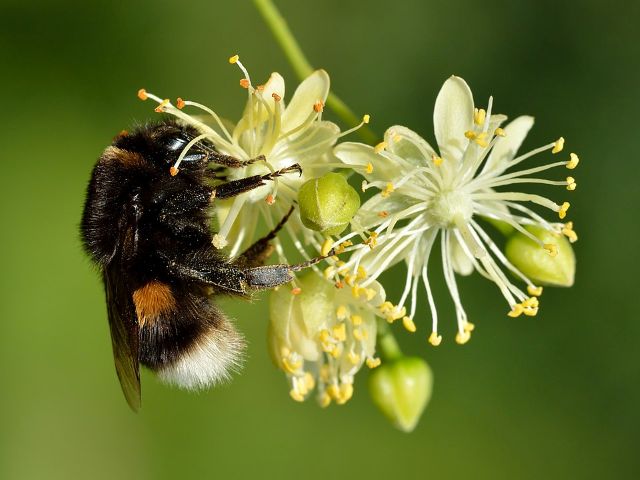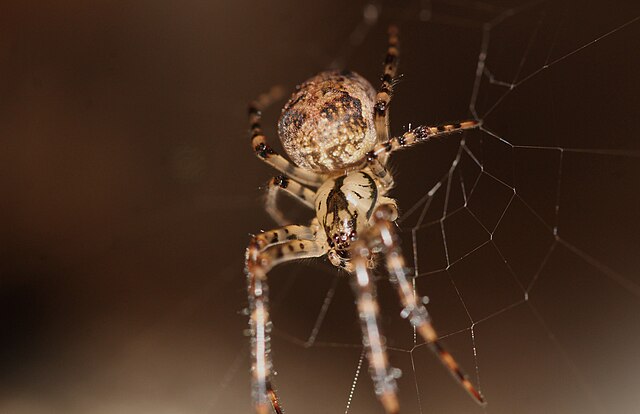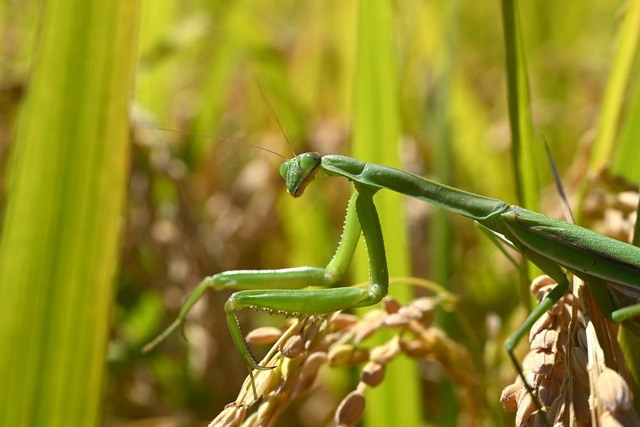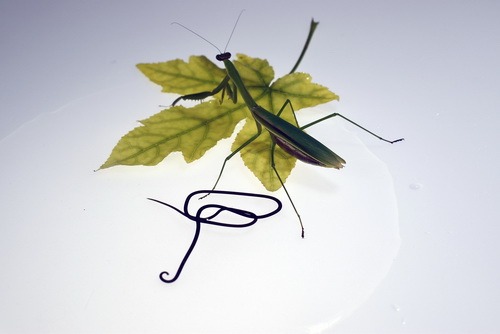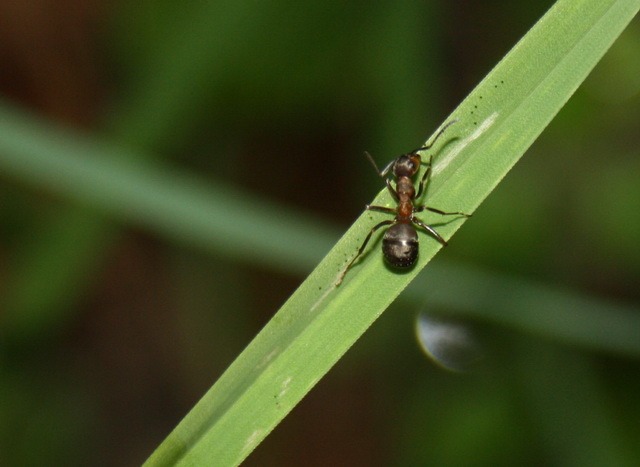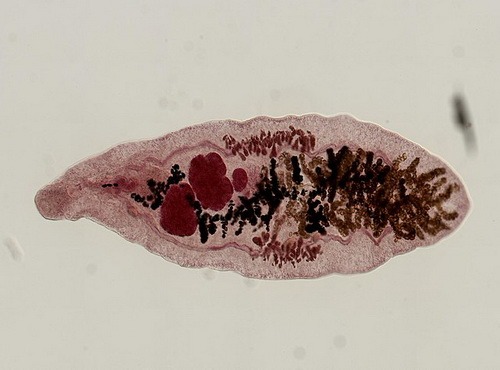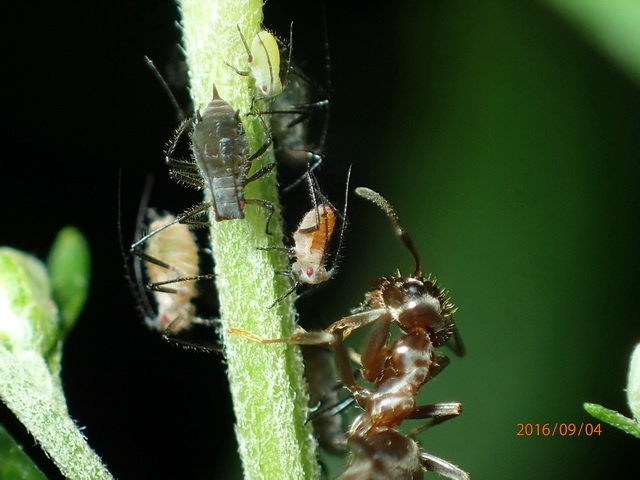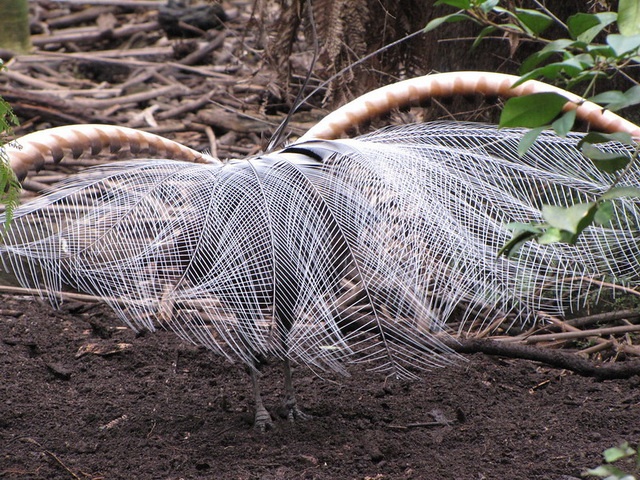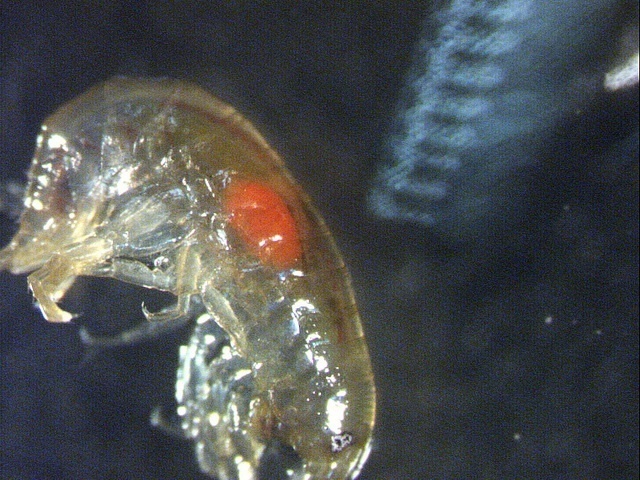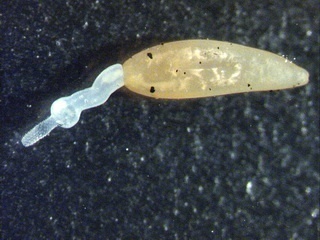Ant workers obey parasitic queen
The presence of a queen in a colony of yellow meadow ants is essential for the workers, her daughters. Yet, the parasitic ant Lasius orientalis induces the workers to commit matricide, as Taku Shimada and colleagues witnessed.
A colony of the yellow meadow ant, Lasius flavus, is sometimes taken over by a queen of Lasius orientalis. And what is more: the workers assist her in this takeover, according to Taku Shimada and colleagues. To their own detriment, because the takeover heralds the end of the original colony. How do they get so crazy?
The yellow meadow ant occurs in Asia, North Africa and Europe; Lasius orientalis occurs in parts of Asia.
Population replacement
The yellow meadow ant, a light-coloured insect, lives in underground nests and engages in animal husbandry: the ants breed root aphids in their nests and consume the honeydew they excrete. The ants only appear above ground in July and August, during nuptial flights. Multiple young queens jointly establish a colony. Later, the queens fight for dominance until only one queen remains per nest.
Lasius orientalis has another life cycle. Like some other ant species, it is temporarily parasitic. Young queens of these species are unable to establish a colony on their own, but require a well-functioning colony of another species to settle. A young queen invades such a colony and eliminates the legitimate queen. She then makes the orphaned workers – daughters of the missing queen – serve her, parasitizing on their workforce. They care for the eggs laid by the intruder as if it were eggs of their own queen.
Once the parasite produced her own workers, they maintain the new colony that then is no longer parasitic, but independent. Gradually, the members of the original colony are replaced by strangers.
Hostile takeover
But don’t think that a parasitic lifestyle is easy. A parasitic queen must overcome significant obstacles before she can take over a colony. First, she must enter the nest without being discovered as a stranger and chased away or killed. To achieve this, she must somehow acquire the correct colony scent. And once inside, she struggles to attack and kill the resident queen, which is fiercely defended by her colony.
For that last hurdle, Lasius orientalis, upon entering a nest of the yellow meadow ant, has a gruesome solution: she doesn’t attack the queen herself, but leaves that job to the workers present, the daughters that normally defend their mother so ferociously. That is quite something!
Manipulation
Shimada shows how it happens. The intruder sprays the legitimate queen several times with a fluid from her abdomen, likely formic acid. Formic acid is a corrosive defence agent that also functions as an alarm signal. The sprayings make the workers increasingly nervous and aggressive to their mother, which is laden with formic acid. It escalates to such a point that the workers kill their mother after a few days. Then only the hostile queen remains. The workers accept her and allow themselves to be abused; from now on, they work for the benefit of an alien colony.
There’s another shameless species: Lasius umbratus, a temporarily parasitic ant that conquers Lasius japonicus colonies. Also this ant manipulates the behaviour of the conquered workers so that they kill their own mothers.
Willy van Strien
Photo: Yellow meadow ant, winged queens. Dat doris (Wikimedia Commons, Creative Commons CC BY-SA 4.0)
Source:
Shimada, T., Y. Tanaka & K. Takasuka, 2025. Socially parasitic ant queens chemically induce queen-matricide in host workers. Current Biology 35: R1065–R1080. Doi: 10.1016/j.cub.2025.09.037
